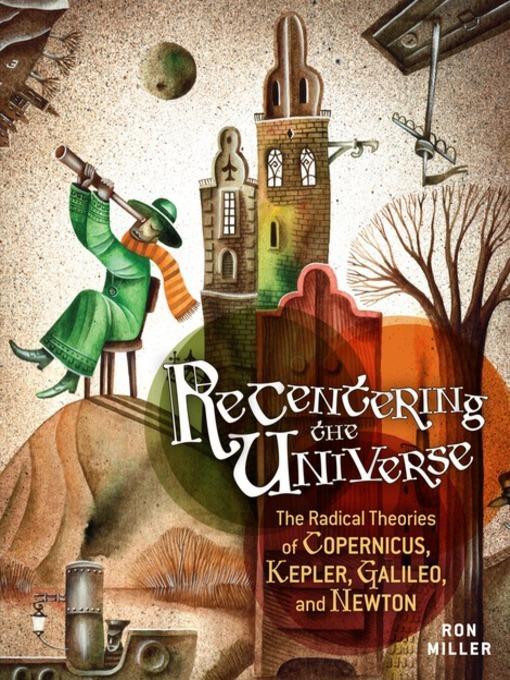
Recentering the Universe
The Radical Theories of Copernicus, Kepler, Galileo, and Newton
فرمت کتاب
ebook
تاریخ انتشار
2013
Lexile Score
1040
Reading Level
6-8
ATOS
7.8
Interest Level
6-12(MG+)
نویسنده
Ron Millerشابک
9781467716628
کتاب های مرتبط
- اطلاعات
- نقد و بررسی
- دیدگاه کاربران
نقد و بررسی

September 1, 2013
Gr 6 Up-Beginning with the earliest ideas about the stars and their relationship to Earth, Miller chronicles how scientists challenged prevailing beliefs that the Earth was the center of the universe. For example, Copernicus's 1514 publication of his "Commentariolus," a six-page essay he distributed to his friends, proposed six new scientific cosmological explanations, including that "All the planets orbit the sun." Miller objectively explains the existing belief system upheld by the powerful Catholic Church and its resistance to change. Reproductions of ancient texts by Copernicus, Kepler, Galileo, Newton, and Brahe are featured. Text boxes amplify the main text nicely. A two-page glossary provides helpful definitions of such terms as "parallax," "cosmology," and "retrograde motion." Some of these terms are included in the two-page index. This is a useful, first purchase for astronomy report writers and those seeking biographical information about important scientists.-Frances E. Millhouser, formerly at Fairfax County Public Library, VA
Copyright 2013 School Library Journal, LLC Used with permission.

September 15, 2013
A compact, engaging look at how the revolutionary theories of Nicolaus Copernicus, Johannes Kepler, Galileo Galilei and Isaac Newton completely changed humankind's understandings of the Earth and the universe--and caused tremendous controversy. For over 1,000 years, the Earth was the center of the universe according to established scientific thinking going back to ancient Greece and to the teachings of the Catholic Church. Scientists challenging this long-accepted geocentric view of the universe risked their reputations and even their lives for contradicting biblical authority and church doctrine. Miller explains how the "radical" theories of Copernicus, Kepler, Galileo and Newton complemented one another and, in less than 200 years, completely overturned established ideas about the universe that had lasted more than a millennium. His discussions of each scientist's theories are accessible, clear and concise, though his emphasis is on their courage in challenging the very heart of religious and scientific tradition. Archival material illustrates the book, and sidebars help to provide specialized background information. An inspiring, holistic take on milestones of scientific progress. (glossary, source notes, bibliography, resources for further information) (Nonfiction. 12-18)
COPYRIGHT(2013) Kirkus Reviews, ALL RIGHTS RESERVED.

November 1, 2013
Grades 6-9 This informative book traces the gradual shift from an earth-centered view of the universe to the realizations that the planets move in elliptical orbits around the sun and that the solar system is not the center of the universe. Beginning in the early 1500s, when Copernicus published his ideas, these sometimes dangerous concepts gained traction over the next two centuries through the work and publications of Kepler, Galileo, and Newton. After an intriguing chapter on modern geocentrism, Miller briefly considers the roles of religion and science in people's lives. He explains concepts clearly and places each scientist's work within the context of generally held beliefs in his society. Readers could glean much of this information by reading the biographies of the scientists discussed, but the book's focus on the ideas, their controversial nature, and their gradual acceptance is very useful. The book's illustrations are well chosen and include archival images of the universe as well as photos of sites and artifacts. A solid discussion of a pivotal time in science history.(Reprinted with permission of Booklist, copyright 2013, American Library Association.)

























دیدگاه کاربران